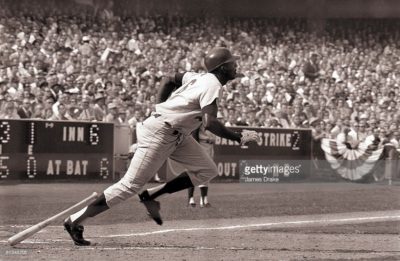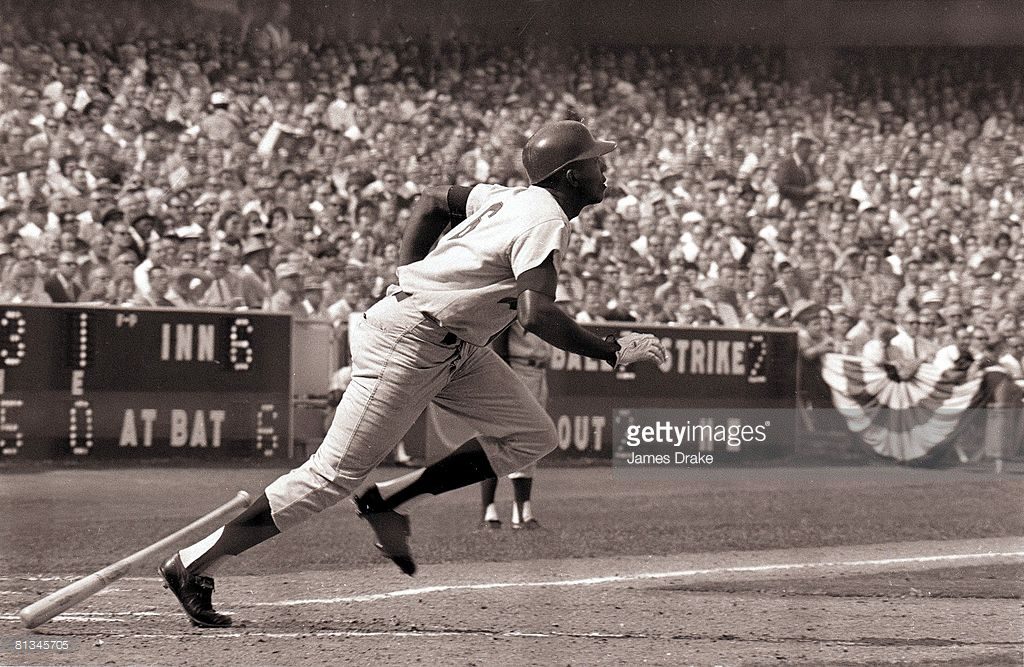Tony Oliva Photo Gallery
Click on any image below to see photos in full size and to start Photo Gallery:

“Tony-O For the Hall of Fame?”
In my recent post about Dick Allen for the Hall of Fame, a number of readers mentioned that they’d also like to see Tony Oliva enshrined in Cooperstown. So I decided to look a little closer at Tony’s career. Was Tony a “very good player;” or was he Hall-of-Fame caliber? Like Mickey Mantle, how good would he have been if injuries had not taken their toll? Should injuries be a factor is assessing a player’s value worthiness for the Hall? Check for yourself and see what you think. Feel free to add comments below.
Possibly the greatest of the Cuban-born players, Tony Olvia played 15 years in the major leagues (1962-’76), all with the Twins as a right fielder and late, after injuries set in, as a designated hitter. Over his career, he hit .304 with 220 home runs and 947 RBIs, 870 runs, 1,917 hits, 329 doubles, 48 triples, and 86 stolen bases. With one of the greatest starts ever to a major league career, he was selected to the All-Star team his first eight seasons, surpassing Joe DiMaggio‘s previous record of six selections. A star of the first magnitude, he was considered to be on a Hall of Fame track over his first eight seasons. Throughout his career, the popular “Tony-O” was known as a great teammate and was always a positive influence in the clubhouse. He was also a fan favorite and was well-regarded by the media.
Compiling one of the great rookie seasons in baseball history, Oliva was a near-unanimous selection as the 1964 American League Rookie of the Year. His league-leading .323 batting average made him the first player ever to win the Rookie of the Year Award and the batting title. He also led the league in hits (217), doubles (43), extra base hits (84), total bases (374), runs (109), and runs created (133). In 1965, he won a second straight title with a .321 average. His back-to-back first and second year batting titles were another first in baseball history. His offensive production was even more significant since it occurred during the pitcher-dominated “second deadball era,” with only two other American League hitters reaching .300: Carl Yastrzemski (.312) and Vic Davalillo (.301). In 1971, Oliva won his third batting title (.337) and also led the league in slugging percentage (.546).
Early in his career, Tony was a Gold Glove caliber outfielder with a powerful, accurate arm, leading American League right-fielders in putouts six times, double plays three times, and assists twice. His career was hampered in its prime by a series of severe knee injuries, ending his days as a position player and forcing him to become a designated hitter.
Other highlights from Tony’s career include: An eight-time All-Star, a three-time American League batting champion, a five-time American League hits leader, and a one Gold Glove. On April 6, 1973 Tony hit the major leagues’ first home run as a designated hitter. Oliva holds the distinction of being the only on-field team member to appear with all three Minnesota Twins’ World Series teams: star outfielder in 1965, hitting coach in 1987 and bench coach in 1991.
Tony has been considered numerous times for Hall of Fame selection by both the Veteran’s Committee and the Golden Age Committee, but has always fallen short. As recently as 2015 he fell one vote shy of selection by the Golden Age Committee.
In 1981, Lawrence Ritter and Donald Honig included him in their book The 100 Greatest Baseball Players of All Time. But James, saying that Oliva was a “viable” Hall of Fame candidate, ultimately did not support his selection. Several contemporaries have endorsed his enshrinement in the Hall, including Tony Pérez, who mentioned in his 2000 induction speech that he hoped Oliva would soon be selected.
Oliva was a coach for the Twins after he retired and. In 2000 was one of six members inducted into the initial class of the Minnesota Twins Hall of Fame.
-Gary Livacari
Photo Credits: All from Google search
Information: Excerpts from the Tony Oliva Wikipedia page: https://en.wikipedia.org/wiki/Tony_Oliva
Subscribe to my blog for automatic updates and Free Bonus Reports: “Memorable World Series Moments” and “Gary’s Handy Dandy World Series Reference Guide.”

